Luisa Lambri. Lines. Linee

Opera di Luisa Lambri
Dal 29 May 2021 al 2 October 2021
Napoli
Luogo: Thomas Dane Gallery
Indirizzo: Via Francesco Crispi 69
Orari: Tuesday to Friday 11am-1:30pm and 2:30pm-7pm, Saturday 12pm-7pm or by appointment
Curatori: Douglas Fogle and Hanneke Skerath
Telefono per informazioni: +39 081 1892 0545
E-Mail info: naples@thomasdanegallery.com
Sito ufficiale: http://www.thomasdanegallery.com
Lines connect us to the world. They establish a horizon that grounds us to the earth when we look at the sea. They define the architectural spaces in which we live. They connect our historical past to our present and point hopefully towards our collective future. For her first exhibition at Thomas Dane Gallery in Naples, the Milan-based artist Luisa Lambri has chosen to focus her camera on how lines create both lived and abstract space in a new body of photographic work. The works consider two particular historical moments in and around Naples: the frescos inside the architectural structures of the nearby first century A.D. ruins of Pompeii, and the legendary Italian designer Gio Ponti’s built elements for the interiors of the Royal Continental Hotel in Naples and the Parco dei Principi in Sorrento. Produced specifically for the elegant 19th century rooms of Thomas Dane Gallery, these works will be shown alongside Lambri’s new photographic investigations of the line in the work of the Polish conceptual artist Edward Krasinski (1925-2004), and the California Light and Space artist Doug Wheeler.
Having spent the past decades training her camera on idiosyncratic elements of significant modern and contemporary architecture, Lambri has taken the specific historical context of Naples to heart and ventured into its storied antiquity with a number of new works that examine how the classical frescos of Pompeii create abstract spaces through the geometry of their decorative framing lines. Working on site this past year in the preserved ruins of the ancient city, Lambri turned her attention to the interior walls of the Casa degli Amanti, Stanza di Leda e l’Atrio di Narciso, and the Casa di Giulia Felice. While their interior frescos are decidedly figurative, the artist paradoxically became fascinated with the ways that the Pompeiian artisans used linear design elements to define and enhance the portraits of patrons and allegorical myths that adorn these walls. As the artist has pointed out “sometimes all that is left of the paintings in these ruins are the framing lines themselves which in my mind are simple and beautiful in their own right.” The resulting photographs take the artisans’ decorative lines – at times adorned with flowers or vine-like leaves – and transforms them into ghostly reminders of the past lives lived within these walls. In Lambri’s hands these lines become an abstract geometry of ruins.
Lambri springs forward hundreds of years in a complementary body of newly completed work that looks at Gio Ponti’s designs for hotels in Naples and Sorrento. In one series of work, Lambri focuses on the briarwood of Ponti’s built-in closets that he completed for the Royal Continental Hotel in Naples in 1953. Isolating the vertical seam between the closet doors in the centre of her image, the artist plays with the contrast between modernity’s obsession with austere clean lines and the lush Baroque pattern created naturally by the wood grain to create ebullient amber abstractions. A similar tension between organic material and the functional lines of modernism is at play in Lambri’s photograph of a Gio Ponti-designed glass block porthole-style window in the Parco dei Principi Hotel in Sorrento, built in 1961. Set into the wall on its point, this solid block of glass acts as a watery lens framing the succulent vegetation of the hotel’s gardens. In Lambri’s image the window floats mysteriously in a black field and plays with the spatial relationship between inside and outside, offering us a portal into another world.
Lambri completes this exhibition with photographs that explore the use of light, lines and horizontality in the art works and environmental installations of Light and Space artist Doug Wheeler and the Polish conceptual artist Edward Krasinski. Lambri photographs Krasinski’s signature blue lines – long horizontal Scotch tape lines that the artist installed on walls between and on top of his other works at a height of 130cm – creating a new abstract horizon- line that bisects her photographic prints and makes a strangely emotional connection to how Krasinski’s lines condensed the distance between art, environment and viewer. Under the gaze of Lambri’s lens, these abstract blue lines poetically invoke the optical division between earth and sky, or the separation between land and sea. Lambri also amplifies the connective human qualities of Krasinski’s tape that was said to be consistently applied to the wall at the average height of the human heart. Lambri creates a kind of mirror inversion of this blue horizon line in her photographs of an immersive Light and Space installation by Doug Wheeler. In the resulting photographs, a horizontal line of white light traverses the misty blue glow of Wheeler’s optical haze to suggest an unearthly azure seascape similar to that of the nearby Mediterranean visible from the veranda of Thomas Dane Gallery.
Whether looking at the historical architecture of Pompeii, the design objects of Ponti, the linear conceptual interventions of Krasinski or the environmental optics of Doug Wheeler, the common denominator for Luisa Lambri’s photographs is how the abstract geometric lines of the built world conceptualize space as a site of contemplation and presence. In these bodies of work the past, present and future collide in a poetic dance of lines that connect us as human beings while defining the lived space of our shared world.
Luisa Lambri’s research at the Archeological Park of Pompeii has been conducted by the artist in Fall 2020 as part of Pompeii Commitment. Archaeological Matters, a contemporary art program conceived by Massimo Osanna and Andrea Viliani, who co-curates it with Stella Bottai and Laura Mariano. One of Lambri’s works resulting from this research is now part of the new contemporary art collection of Pompeii’s Archaeological Park and is reflected in the artist’s related contribution to the digital research center www.pompeiicommitment.org, published online on May 27.
Luisa Lambri was born in 1969 in Como, Italy and currently lives in Milan, Italy. Her work has been included in two Venice Biennales: dAPERTutto, the 48th International Art Exposition in 1999, for which the Italian Pavilion was awarded the Golden Lion, and Dreams and Conflicts: The Dictatorship of the Viewer, the 50th International Art Exposition in 2003. Selected institutional solo exhibitions include: AUTORITRATTO, Padiglione D'Arte Contemporanea (PAC), Milan, Italy (2021); Being There, Hammer Museum, Los Angeles CA (2010), Front Room: Luisa Lambri, curated by Darsie Alexander, Baltimore Museum of Art, Baltimore MD (2007), and Locations, The Menil Collection, Houston TX (2004). Selected public collections include: The Art Institute of Chicago, Chicago IL; Carnegie Museum of Arts, Pittsburgh PA; Galleria Nazionale d'Arte Moderna, Rome, Italy; San Francisco Museum of Modern Art, San Francisco CA; Guggenheim Museum, New York NY; Zabludowicz Collection, London, England, among many others.
Having spent the past decades training her camera on idiosyncratic elements of significant modern and contemporary architecture, Lambri has taken the specific historical context of Naples to heart and ventured into its storied antiquity with a number of new works that examine how the classical frescos of Pompeii create abstract spaces through the geometry of their decorative framing lines. Working on site this past year in the preserved ruins of the ancient city, Lambri turned her attention to the interior walls of the Casa degli Amanti, Stanza di Leda e l’Atrio di Narciso, and the Casa di Giulia Felice. While their interior frescos are decidedly figurative, the artist paradoxically became fascinated with the ways that the Pompeiian artisans used linear design elements to define and enhance the portraits of patrons and allegorical myths that adorn these walls. As the artist has pointed out “sometimes all that is left of the paintings in these ruins are the framing lines themselves which in my mind are simple and beautiful in their own right.” The resulting photographs take the artisans’ decorative lines – at times adorned with flowers or vine-like leaves – and transforms them into ghostly reminders of the past lives lived within these walls. In Lambri’s hands these lines become an abstract geometry of ruins.
Lambri springs forward hundreds of years in a complementary body of newly completed work that looks at Gio Ponti’s designs for hotels in Naples and Sorrento. In one series of work, Lambri focuses on the briarwood of Ponti’s built-in closets that he completed for the Royal Continental Hotel in Naples in 1953. Isolating the vertical seam between the closet doors in the centre of her image, the artist plays with the contrast between modernity’s obsession with austere clean lines and the lush Baroque pattern created naturally by the wood grain to create ebullient amber abstractions. A similar tension between organic material and the functional lines of modernism is at play in Lambri’s photograph of a Gio Ponti-designed glass block porthole-style window in the Parco dei Principi Hotel in Sorrento, built in 1961. Set into the wall on its point, this solid block of glass acts as a watery lens framing the succulent vegetation of the hotel’s gardens. In Lambri’s image the window floats mysteriously in a black field and plays with the spatial relationship between inside and outside, offering us a portal into another world.
Lambri completes this exhibition with photographs that explore the use of light, lines and horizontality in the art works and environmental installations of Light and Space artist Doug Wheeler and the Polish conceptual artist Edward Krasinski. Lambri photographs Krasinski’s signature blue lines – long horizontal Scotch tape lines that the artist installed on walls between and on top of his other works at a height of 130cm – creating a new abstract horizon- line that bisects her photographic prints and makes a strangely emotional connection to how Krasinski’s lines condensed the distance between art, environment and viewer. Under the gaze of Lambri’s lens, these abstract blue lines poetically invoke the optical division between earth and sky, or the separation between land and sea. Lambri also amplifies the connective human qualities of Krasinski’s tape that was said to be consistently applied to the wall at the average height of the human heart. Lambri creates a kind of mirror inversion of this blue horizon line in her photographs of an immersive Light and Space installation by Doug Wheeler. In the resulting photographs, a horizontal line of white light traverses the misty blue glow of Wheeler’s optical haze to suggest an unearthly azure seascape similar to that of the nearby Mediterranean visible from the veranda of Thomas Dane Gallery.
Whether looking at the historical architecture of Pompeii, the design objects of Ponti, the linear conceptual interventions of Krasinski or the environmental optics of Doug Wheeler, the common denominator for Luisa Lambri’s photographs is how the abstract geometric lines of the built world conceptualize space as a site of contemplation and presence. In these bodies of work the past, present and future collide in a poetic dance of lines that connect us as human beings while defining the lived space of our shared world.
Luisa Lambri’s research at the Archeological Park of Pompeii has been conducted by the artist in Fall 2020 as part of Pompeii Commitment. Archaeological Matters, a contemporary art program conceived by Massimo Osanna and Andrea Viliani, who co-curates it with Stella Bottai and Laura Mariano. One of Lambri’s works resulting from this research is now part of the new contemporary art collection of Pompeii’s Archaeological Park and is reflected in the artist’s related contribution to the digital research center www.pompeiicommitment.org, published online on May 27.
Luisa Lambri was born in 1969 in Como, Italy and currently lives in Milan, Italy. Her work has been included in two Venice Biennales: dAPERTutto, the 48th International Art Exposition in 1999, for which the Italian Pavilion was awarded the Golden Lion, and Dreams and Conflicts: The Dictatorship of the Viewer, the 50th International Art Exposition in 2003. Selected institutional solo exhibitions include: AUTORITRATTO, Padiglione D'Arte Contemporanea (PAC), Milan, Italy (2021); Being There, Hammer Museum, Los Angeles CA (2010), Front Room: Luisa Lambri, curated by Darsie Alexander, Baltimore Museum of Art, Baltimore MD (2007), and Locations, The Menil Collection, Houston TX (2004). Selected public collections include: The Art Institute of Chicago, Chicago IL; Carnegie Museum of Arts, Pittsburgh PA; Galleria Nazionale d'Arte Moderna, Rome, Italy; San Francisco Museum of Modern Art, San Francisco CA; Guggenheim Museum, New York NY; Zabludowicz Collection, London, England, among many others.
SCARICA IL COMUNICATO IN PDF
COMMENTI

-
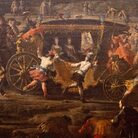 Dal 20 December 2025 al 20 April 2026
Caserta | Reggia di Caserta
Dal 20 December 2025 al 20 April 2026
Caserta | Reggia di Caserta
Regine: trame di cultura e diplomazia tra Napoli e l’Europa
-
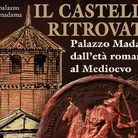 Dal 19 December 2025 al 23 March 2026
Torino | Palazzo Madama - Museo Civico d’Arte Antica
Dal 19 December 2025 al 23 March 2026
Torino | Palazzo Madama - Museo Civico d’Arte Antica
Il castello ritrovato. Palazzo Madama dall’età romana al medioevo
-
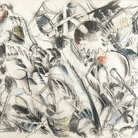 Dal 17 December 2025 al 19 January 2026
Roma | Palazzo della Cancelleria
Dal 17 December 2025 al 19 January 2026
Roma | Palazzo della Cancelleria
De Humana Mensura di Linda Karshan
-
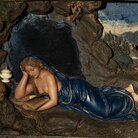 Dal 18 December 2025 al 12 April 2026
Firenze | Gallerie degli Uffizi
Dal 18 December 2025 al 12 April 2026
Firenze | Gallerie degli Uffizi
Cera una volta. Sculture dalle collezioni medicee
-
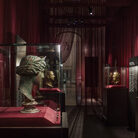 Dal 11 December 2025 al 9 April 2026
Firenze | Museo Archeologico Nazionale di Firenze
Dal 11 December 2025 al 9 April 2026
Firenze | Museo Archeologico Nazionale di Firenze
Icone di Potere e Bellezza
-
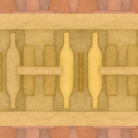 Dal 11 December 2025 al 11 January 2026
Roma | Palazzo Esposizioni Roma
Dal 11 December 2025 al 11 January 2026
Roma | Palazzo Esposizioni Roma
Giorgio Morandi nella Collezione Eni. Un viaggio attraverso la storia culturale del cane a sei zampe e l’eredità di Enrico Mattei


